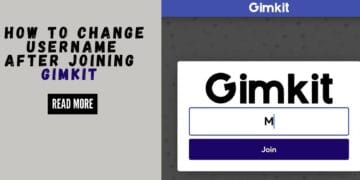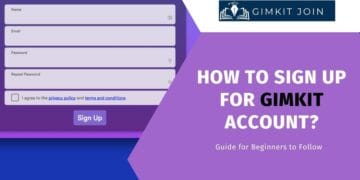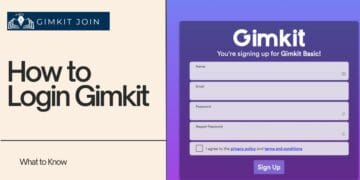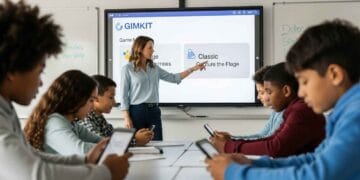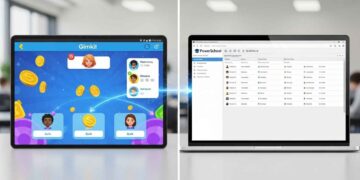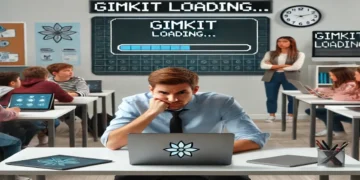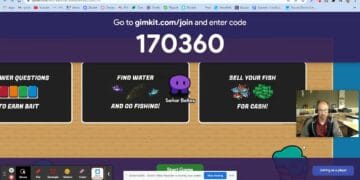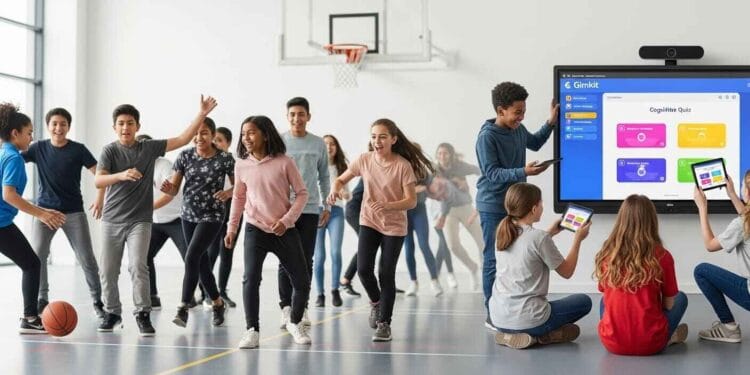You know the feeling: the rain is pouring down outside, the gym is booked by another class, or you’ve just finished a vigorous unit and your students’ brains need a workout as much as their bodies. PE isn’t just dodgeball and running laps—students need to know WHY movement matters!
This is where Gimkit for PE and health steps in.
For too long, physical education technology activities were a last-minute addition, relegated to an old computer lab or a boring PowerPoint lecture. But modern physical education—the kind that truly promotes a lifelong wellness mindset—demands that students understand the cognitive domain in PE: the rules, the strategies, the anatomy, and the health knowledge that underpins every physical action. If you’re not sure about the basic mechanics, check out our guide on what are the main features of Gimkit.
Gimkit changes the game. It’s the perfect tool for addressing the rainy day dilemma, managing indoor activities, and providing standards-aligned, knowledge-based assessment,s whether your students are in the gymnasium or learning from home.
Ready to turn your next health lesson into a high-energy competition or your pre-game strategy session into a cash-earning frenzy? This is your definitive guide. We’re going to show you exactly how to use Gimkit in PE class and provide a massive list of 50+ ready-to-use PE games and activities that are standards-aligned, engaging, and easy to implement.
Why Gimkit Belongs in PE and Health Classes
When you think of gamification in physical education, you probably picture activity trackers or fitness apps. But the biggest gap in modern PE instruction isn’t movement; it’s knowledge. Gimkit fills that gap with an injection of competitive fun. Gimkit is a powerful tool designed to transform classroom quizzes with Gimkit into engaging, real-time competitions.
The Cognitive Domain in Physical Education
 Physical Education is a rich, three-dimensional subject that involves the mind, body, and spirit. Effective teaching requires attention to all three areas.
Physical Education is a rich, three-dimensional subject that involves the mind, body, and spirit. Effective teaching requires attention to all three areas.
Three Domains of PE Learning
- Psychomotor Domain: This is the physical stuff—the development of motor skills and fitness components. (Running, jumping, throwing, etc.)
- Cognitive Domain: This is the brainwork—the knowledge of rules, movement concepts, strategies, safety procedures, and health literacy. Gimkit’s focus on question-and-answer makes it the ultimate tool for assessing and building this domain.
- Affective Domain: This is the emotional and social growth—the development of attitudes, values, sportsmanship, and responsibility. Gimkit’s team and collaborative modes are excellent for reinforcing these social skills.
Why do all three matter for complete physical literacy? A student who can perform a push-up but doesn’t understand the benefits of aerobic exercise or nutrition knowledge is only half-educated. Gimkit ensures you’re developing the complete athlete and the informed citizen.
Meeting National PE Standards
Today’s PE classes face high standards of accountability. Teachers must be able to document student learning across all domains.
- SHAPE America Standards: These SHAPE America Standards explicitly require students to demonstrate understanding of movement concepts and fitness knowledge (Standards 2 and 3).
- Assessment and accountability needs: Unlike paper quizzes that pile up, Gimkit instantly generates detailed reports, making documenting cognitive learning for standards-based reporting simple and efficient.
Common PE Teacher Challenges Gimkit Solves
 Gimkit isn’t just a fun add-on; it’s a powerful solution to some of the biggest logistical headaches PE teachers face. For teachers evaluating technology for their program, you might want to look at which is better, Gimkit or Blooket.
Gimkit isn’t just a fun add-on; it’s a powerful solution to some of the biggest logistical headaches PE teachers face. For teachers evaluating technology for their program, you might want to look at which is better, Gimkit or Blooket.
The Rainy Day Dilemma
Every PE teacher knows the stress of a sudden weather change. The “rainy day” lesson must be engaging, productive, and require limited indoor space.
- Limited indoor space solutions: When the gym is a shared space or unavailable, Gimkit turns a regular classroom into a high-energy, indoor activity.
- Maintaining engagement without movement: Gimkit’s constant action and competitive pressure keep energy levels high, transforming what could be boring PE classroom activities into an exciting cognitive challenge.
Health Education Integration
Health class time is often limited and packed with critical content like mental health awareness and substance abuse prevention.
- Engaging students in “lecture” content: Gimkit uses gamification in physical education to inject competition into topics like anatomy basics or nutrition education, making them relevant and memorable. A solid understanding of nutrition knowledge is foundational for lifelong health.
- Assessment of health knowledge: The platform allows for rapid, low-stakes assessment, ensuring students are absorbing vital health education through interactive activities without the pressure of a formal test.
Hybrid and Remote PE
The shift to virtual learning highlighted the need for engaging PE theory lessons with technology that work outside the gym.
- At-home cognitive learning: Gimkit allows students to complete assigned Kits as asynchronous learning, ensuring they build fitness knowledge and health literacy even during distance learning.
- Maintaining connection with students: Playing a live Gimkit game in a synchronous session (e.g., via Zoom) is one of the best ways to maintain connection and a sense of class community during virtual PE.
Student Benefits Beyond Movement
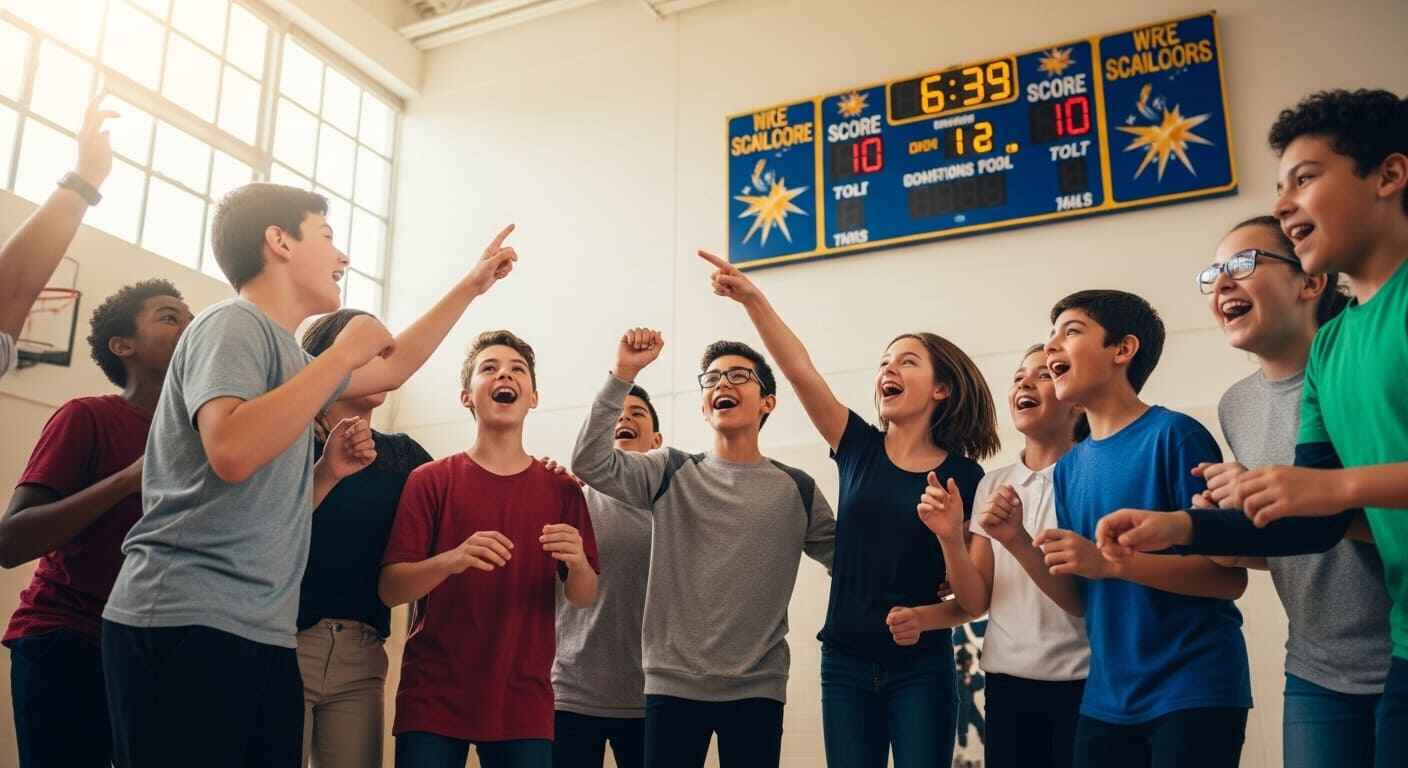 When you use Gimkit, you’re not just testing knowledge; you’re building a deeper understanding that impacts performance.
When you use Gimkit, you’re not just testing knowledge; you’re building a deeper understanding that impacts performance.
Building Complete Athletes
- Understanding body systems enhances performance: Quizzing students on the Cardiovascular System or Muscular System kits helps them connect exercise to physiological function, motivating smarter training choices.
- Injury prevention through education: Knowledge gained from safety procedures and First Aid kits turns into safer practices on the field.
- Health literacy for life: Gimkit is a tool for building wellness education that sticks with them long after the season is over.
Getting Started: Gimkit Basics for PE Teachers
Before you dive into the activities, here’s a quick primer on setting up Gimkit for the specific needs of a PE/Health environment. (This section answers: “How to use Gimkit in PE class?”)
How Gimkit Works in PE Context
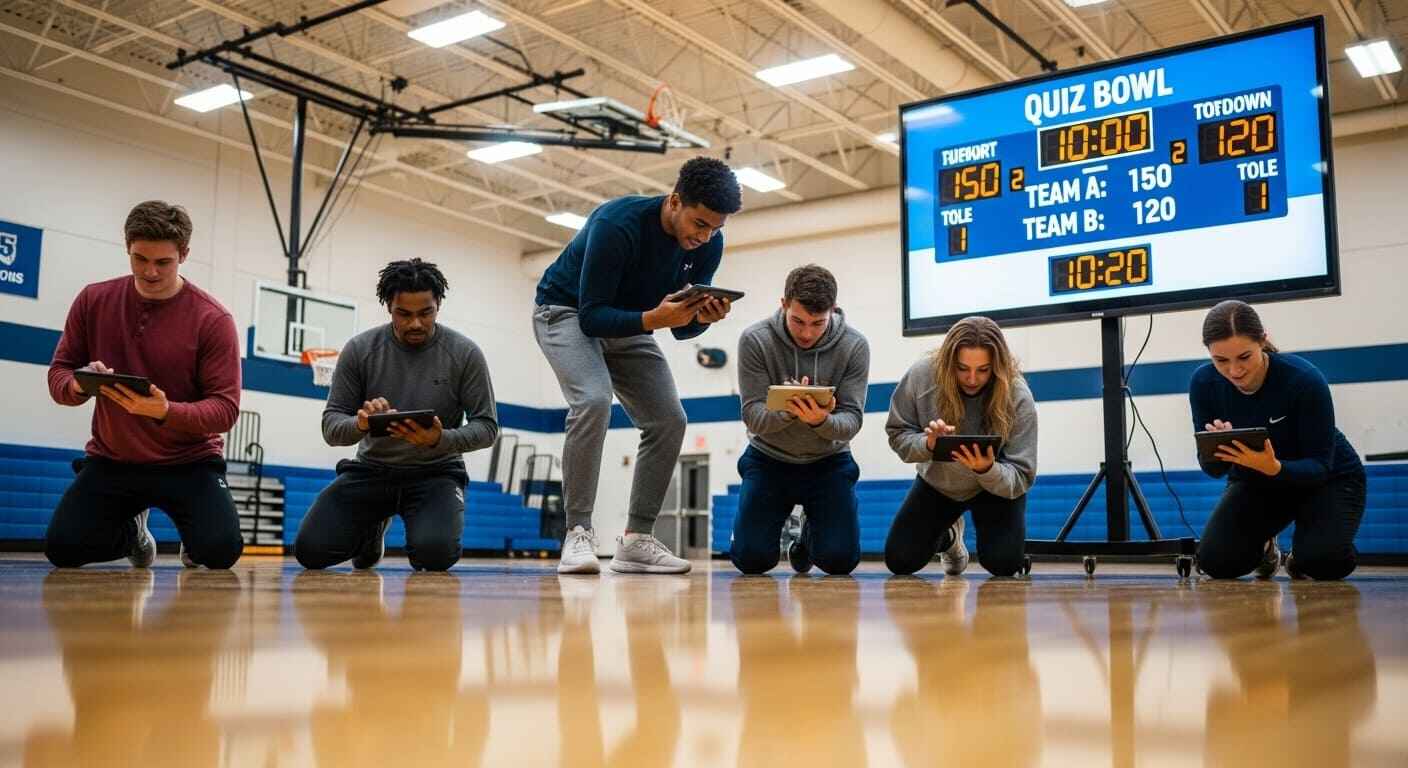 Gimkit, at its core, is a live quiz game where students answer questions to earn virtual money, which they can then spend on power-ups or upgrades to boost their score. This mechanic is perfectly suited for the competitive nature of PE.
Gimkit, at its core, is a live quiz game where students answer questions to earn virtual money, which they can then spend on power-ups or upgrades to boost their score. This mechanic is perfectly suited for the competitive nature of PE.
PE-Specific Adaptations
- Shorter game sessions: PE classes rarely have the luxury of a full 45-minute theory block. Set your Gimkit games for 10-15 minutes for a high-intensity, low-commitment activity.
- Higher energy, faster pacing: Use game modes with a high turnover rate (like Classic or Fishtopia) to keep the energy up and maintain momentum.
- Team modes for collaboration: Use team-based modes to foster sportsmanship and communication while reinforcing content.
Setting Up Your PE Gimkit Account
Setting up your PE Gimkit account is straightforward, whether you’re using the free “Basic” version or a paid “Pro” account.
- Creating sport and health kits: Organize your kits by sport (Sports rules and strategy), unit (Anatomy Basics), or concept (Nutrition education). Name them clearly (e.g., “HS Basketball Rules IQ”).
- Sharing with the PE department: Use Gimkit’s sharing features to quickly spread the best physical education knowledge games throughout your department, saving everyone time. Teachers can manage all their resources from the Gimkit dashboard guide.
PE Classroom Management for Digital Activities
 Digital activities in a large gymnasium or a dynamic setting require specific logistical planning.
Digital activities in a large gymnasium or a dynamic setting require specific logistical planning.
Device and Space Logistics
- Gymnasium vs classroom setup: If you are playing in the gym, ensure you have a designated “quiet corner” for students to sit and focus on their screens. Use clear signals (a whistle or specific music) for starting and stopping the activity.
- WiFi connectivity in the gym: This can be a challenge. Always run the Gimkit Compatibility Check on your device before using it. If the gym Wi-Fi is weak, check our articles on fixing lag issues in Gimkit or Gimkit not loading common solutions. For additional troubleshooting, refer to the official Gimkit Help/Troubleshooting Page.
Fitness and Exercise Science Activities
These activities leverage Gimkit to build crucial fitness knowledge required for Standard 3 of the SHAPE America framework.
Fitness Components and Training
Cardiovascular Fitness Knowledge
| Kit Ideas | Sample Questions (targeting fitness education quiz games) |
| Heart rate zones and target rates | “What is your target heart rate zone for moderate exercise?” |
| Benefits of aerobic exercise | “Which activity is primarily aerobic: Weight lifting or distance running?” |
| Training principles (FITT) | What does the ‘T’ in the FITT principle stand for? |
Muscular Strength and Endurance
- Major muscle groups identification: Kits can use images to test students on identifying the quadriceps, hamstrings, deltoids, and other anatomy basics.
- Proper form and safety: Questions should cover spotting techniques, proper breathing during lifts, and when to seek assistance to ensure safe practices.
- Progressive overload concept: Test their understanding of how to safely increase intensity over time.
Flexibility and Body Composition
- Stretching types and benefits: Test the difference between dynamic vs static stretching and when to use each.
- Healthy body image concepts: Use scenarios to promote positive self-talk and a healthy perspective on body composition vs weight.
Exercise Physiology Basics
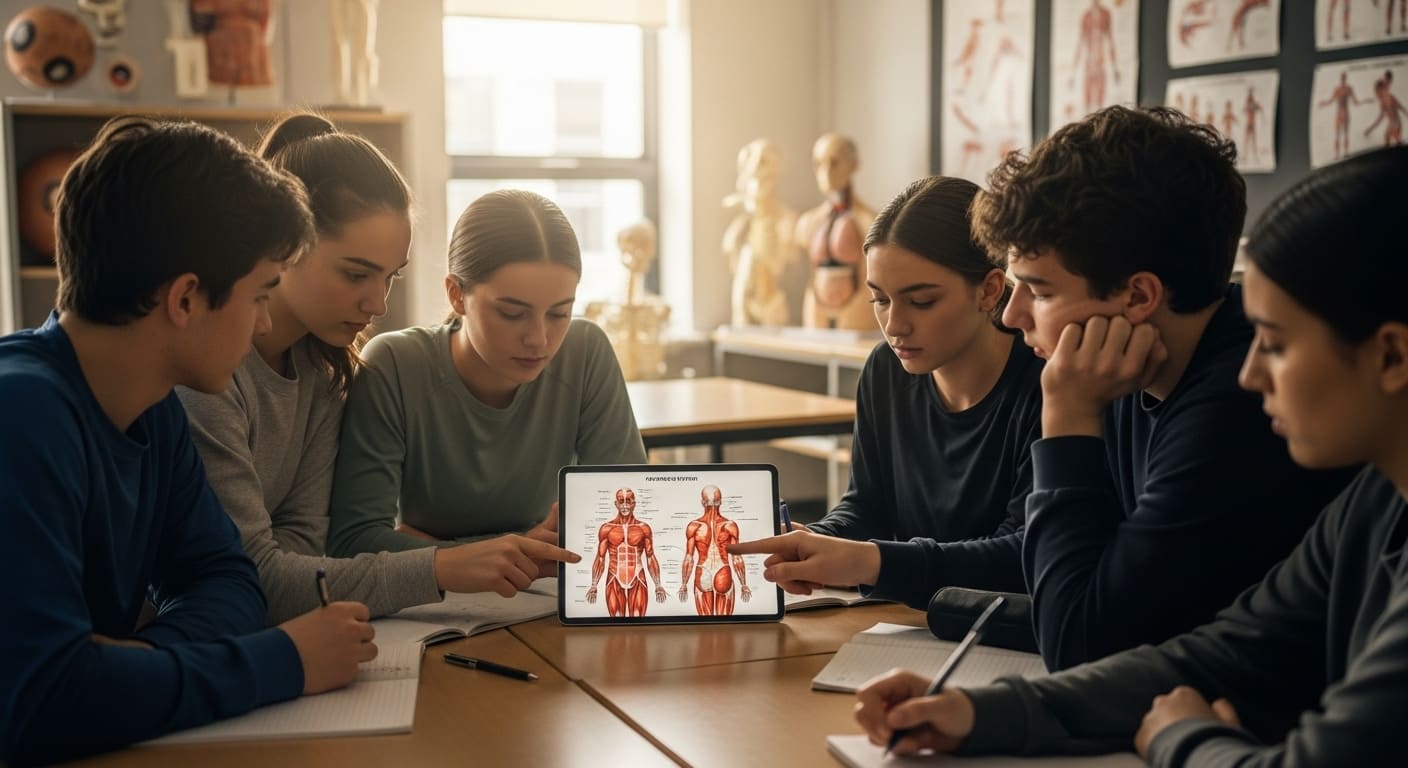 These kits are perfect for high school or advanced middle school PE theory lessons with technology. As students focus on this content, they are also working on advanced techniques for earning Gimkit coins by answering questions quickly and accurately.
These kits are perfect for high school or advanced middle school PE theory lessons with technology. As students focus on this content, they are also working on advanced techniques for earning Gimkit coins by answering questions quickly and accurately.
Body Systems in Exercise
- Cardiovascular System Kit: Quizzing on heart anatomy basics and how blood circulation changes during exercise. Understanding the Cardiovascular System is key to understanding the science of fitness.
- Respiratory System Kit: Questions on breathing mechanics and the role of the lungs in the oxygen delivery system during a marathon.
- Muscular System Kit: Cover muscle types and functions (skeletal, smooth, cardiac) and the different energy systems for movement.
Skill-Related Fitness
- Components Coverage: Create quick kits that test the definitions of agility, balance, coordination, power, reaction time, and speed, asking for real-world sport examples for each.
- Sport-specific applications: “Which component of skill-related fitness is most crucial for a soccer goalie’s save?” (Reaction Time).
Sports Knowledge and Rules Activities
Knowledge of rules is key to sportsmanship and strategic play. Use Gimkit before a unit begins to front-load the physical education knowledge games.
Team Sports Education
Basketball Knowledge Kit
- Content Areas: Use questions to cover basic rules and violations (traveling, double dribble), court dimensions, and the responsibilities of different positions and responsibilities (Point Guard vs. Center).
- Offensive and defensive strategies: Quiz students on zone defense vs. man-to-man and common offensive plays.
Soccer/Football Fundamentals
| Kit Components | Learning Focus (Excellent for PE theory lessons with technology) |
| Field setup and positions | Identify the sweeper, midfielder, and striker roles. |
| Rules and referee signals | Test knowledge of offsides, penalty kicks, and handballs. |
| Tactical concepts | Quiz on concepts like ‘possession’ and ‘pressing.’ |
Volleyball Essentials
- Learning Topics: Ensure students understand rotation and scoring, the difference between a bump, set, and spike, and common violations (e.g., net faults).
Individual and Lifetime Sports
Tennis, Badminton, Pickleball
- Activity Kits: Cover court dimensions and equipment (e.g., what is a shuttlecock?), and scoring systems (Love, Deuce, Advantage). This is great for indoor activities and introduces students to a lifetime wellness mindset in sports.
Track and Field Events
- Event Knowledge: Quick quizzes on different running events and distances (e.g., the difference between the 100m and 400m dash) and the basics of Field events techniques (high jump, shot put).
Health and Wellness Activities
Health Education is where Gimkit for PE and health truly shines, providing interactive, engaging ways to cover sensitive and critical health education interactive activities.
Nutrition Education Kits
Essential Nutrients
- Comprehensive Coverage: Create kits on Macronutrients: Carbs, proteins, fats, and their roles. Use images to quiz on food sources for Micronutrients: Vitamins and minerals. Refer to official government guidelines on the importance of proper nutrition.
- Engaging Questions: “Which nutrient is the body’s primary energy source?” (Carbohydrates). “What is the primary role of protein?” (Building and repairing tissue).
Reading Food Labels
- Practical Skills: Test students’ ability to read real-world food labels. Use image questions showing a food label and ask: “Based on the serving size, how many total calories would you consume if you ate the entire container?” This is crucial for health literacy.
- Marketing claims vs reality: Quiz students on common marketing terms (e.g., “natural,” “light”) and their actual meaning according to the FDA.
Personal Health and Hygiene
Disease Prevention
- Kit Topics: Cover Germ transmission and prevention basics, and the effectiveness of Hand washing techniques. This is essential wellness education.
Sleep and Rest
- Sleep Science: Kits on recommended sleep by age and Sleep hygiene practices (e.g., avoiding screens before bed). Quiz them on the Impact on performance from lack of sleep.
Stress Management
- Coping Strategies: Use scenario-based questions: “Your friend is feeling stressed about a test.. What is an example of a healthy response?” (Deep breathing, talking to an adult).
Mental Health and Emotional Wellness
 This area is vital for the modern student and must be handled with sensitivity and clear facts.
This area is vital for the modern student and must be handled with sensitivity and clear facts.
Mental Health Awareness
- Sensitive Topics: Create kits that help reduce Stigma by defining the difference between feeling sad and having clinical depression or anxiety. Always link to external, official resources for help for students in crisis.
- Warning signs and support: Questions should focus on recognizing warning signs and support behaviors in themselves and their peers.
Building Resilience
- Life Skills: Quizzing on Growth mindset concepts and strategies for handling failure and setbacks (e.g., positive self-talk).
Substance Abuse Prevention
 Content in these kits must be accurate and age-appropriate.
Content in these kits must be accurate and age-appropriate.
Tobacco and Vaping Education
- Critical Information: Cover the health consequences and the reality of E-cigarette myths and facts. Focus heavily on Peer pressure resistance scenarios.
Alcohol and Drug Awareness
- Age-Appropriate Content: Use scenarios to teach Refusal skills and the importance of making informed decisions regarding substance abuse prevention information from reliable sources.
Relationships and Social Health
Healthy Relationships
- Foundation Skills: Kits on Communication essentials (active listening, “I” statements) and understanding Consent and boundaries are non-negotiable for social health.
Bullying Prevention
- Comprehensive Coverage: Quizzing on the Types of bullying (physical, verbal, cyber) and the role of Bystander intervention.
Safety and Injury Prevention Activities
These kits are some of the most practical physical education knowledge games, preparing students for real-life scenarios.
First Aid and Emergency Response
Basic First Aid Kit
- Essential Knowledge: Use visual questions to test their knowledge of the RICE protocol (Rest, Ice, Compression, Elevation) for minor injuries. Acknowledge the limits: “Which of these should you NOT attempt without proper certification?” (CPR).
Sports Injury Prevention
Warm-Up and Cool-Down
- Best Practices: Quiz the “why” behind a Proper warm-up sequence and the difference between Dynamic vs static stretching before and after activity.
Common Sports Injuries
- Injury Education: Dedicate a kit to Concussion awareness and protocol, ensuring students know the Return-to-play criteria and the signs of a serious injury.
Safety Equipment and Procedures
Sport-Specific Equipment
- Protection Knowledge: Use images to test students on Helmets, pads, guards and Proper fit and maintenance for different sports.
Grade-Level Specific Activities
Tailoring the content is crucial for maximizing engagement and meeting developmental standards.
Elementary PE Gimkit (K-5)
 Elementary students need simple, visual, and high-energy kits focused on basic concepts. For more specialized ideas, check our guide on Gimkit in elementary schools.
Elementary students need simple, visual, and high-energy kits focused on basic concepts. For more specialized ideas, check our guide on Gimkit in elementary schools.
Age-Appropriate Content
- Primary Grades Focus: Focus on Basic body parts identification, Healthy foods recognition (using vibrant images), and Sportsmanship basics (e.g., shaking hands after a game).
- Sample Elementary Kits: “MyPlate Food Groups,” “Parts of the Body,” “Being a Good Sport,” “Hygiene Heroes.”
Middle School Applications (6-8)
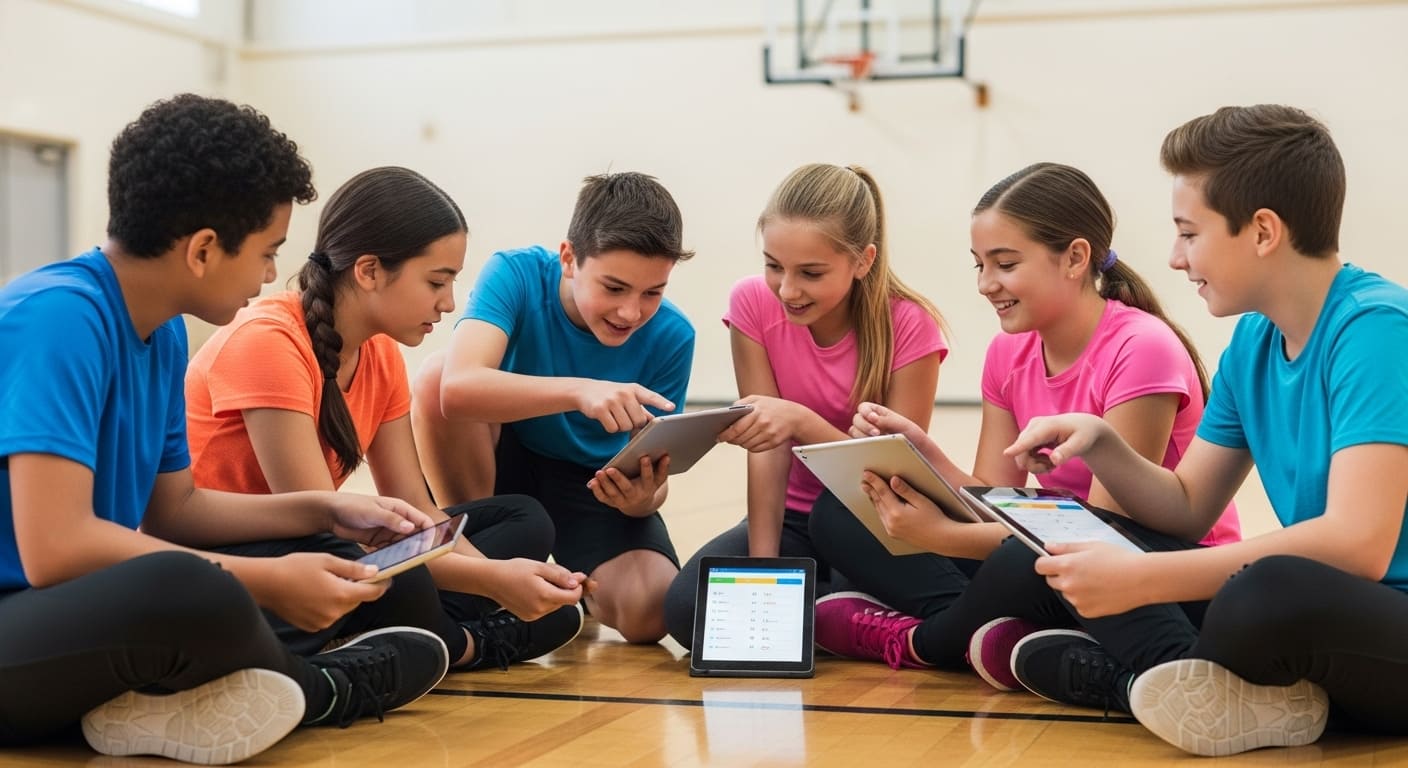 Middle school kits should bridge basic knowledge to strategic application and cover developmental considerations. Read more in our Gimkit for middle school guide.
Middle school kits should bridge basic knowledge to strategic application and cover developmental considerations. Read more in our Gimkit for middle school guide.
- Pre-Teen/Teen Topics: Introduce Puberty and body changes with sensitivity, Fitness testing understanding (why we do it), and deeper dives into Team sports rules.
- Middle School Kit Examples: “Basketball IQ Challenge,” “Nutrition Facts Detective” (focusing on sugar and processed foods), “Positive Self-Talk.”
High School Engagement (9-12)
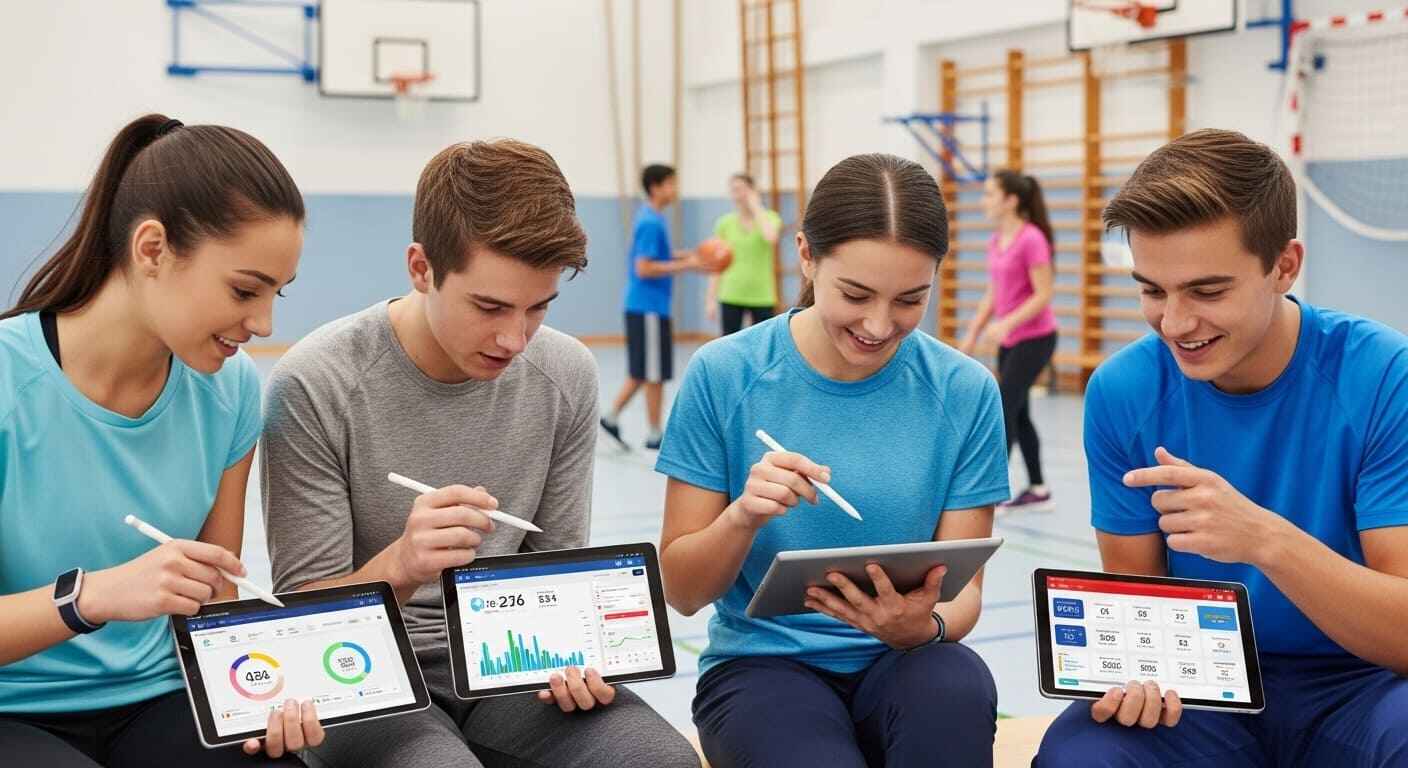 High school content should be comprehensive, mature, and focus on lifelong fitness planning and career paths. Get more advanced ideas in Gimkit in high school.
High school content should be comprehensive, mature, and focus on lifelong fitness planning and career paths. Get more advanced ideas in Gimkit in high school.
- Mature Content: Focus on Exercise science depth, Advanced sports strategy that goes beyond basic rules, and practical life skills like Health Insurance Literacy.
- High School Kit Ideas: “Exercise Physiology 101,” “Sports Nutrition for Athletes,” “Mental Health First Aid Basics,” “Fitness Career Pathways” (connecting learning to sports medicine or personal training).
Creative PE Gimkit Game Modes
The biggest win for Gimkit for PE and health is its ability to blend cognitive challenge with physical activity using its unique game modes. For a comprehensive look at your options, see our guide on exploring Gimkit’s game modes.
Movement-Integrated Gimkit
 This is the ultimate gamification in physical education strategy.
This is the ultimate gamification in physical education strategy.
Active Answer Format
Instead of just sitting to answer, students must perform a short, physical action based on their response.
- Combining Physical and Cognitive:
- Correct answer: Student chooses from a list of fun exercises (10 jumping jacks, 5 squats).
- Incorrect answer: Student is assigned a less-fun but quick exercise (15-second plank, wall sit).
- Power-up earned: Dance break or a quick lap around the designated gym area.
Station Rotation with Gimkit
Multi-Activity Format
Use Gimkit as one station in a larger circuit. This is great for indoor activities and provides a full-body and full-brain workout.
- Circuit Integration:
- Station 1: Physical activity (e.g., cardio circuit).
- Station 2: Gimkit cognitive learning (e.g., “Fitness Test Prep” kit).
- Station 3: Skill practice (e.g., basketball free throws).
- Rotate every 8-10 minutes.
Team Challenge Formats
KitCollab for PE Teams
Use the KitCollab feature to have students work together to build the quiz questions for the next class.
- Collaborative health quizzes: Assign teams a topic (e.g., “Anatomy Basics”) and have them research and submit five questions. This forces deeper processing of the content.
- Team-based sports knowledge: Before a game of flag football, have groups collaborate on a “Flag Football Rules” kit.
Tournament Style Competition
Championship Brackets
Turn your final unit assessment into a “Health Olympics” or a “Sports Knowledge Bowl.”
- Class vs class competitions: Pit your 1st-period class against your 2nd-period class in a synchronous Gimkit game for ultimate bragging rights. Gimkit’s constant action and competitive pressure keep energy levels high, transforming what could be boring PE classroom activities into an exciting cognitive challenge. Use Gimkit’s powerful interactive features to maximize fun. For example, the Fishtopia game mode is a popular choice for engaging students. Read more about Fishtopia Gimkit.
Implementation Strategies
Getting Gimkit to work seamlessly in a PE setting requires a clear plan.
Rainy Day PE Schedule
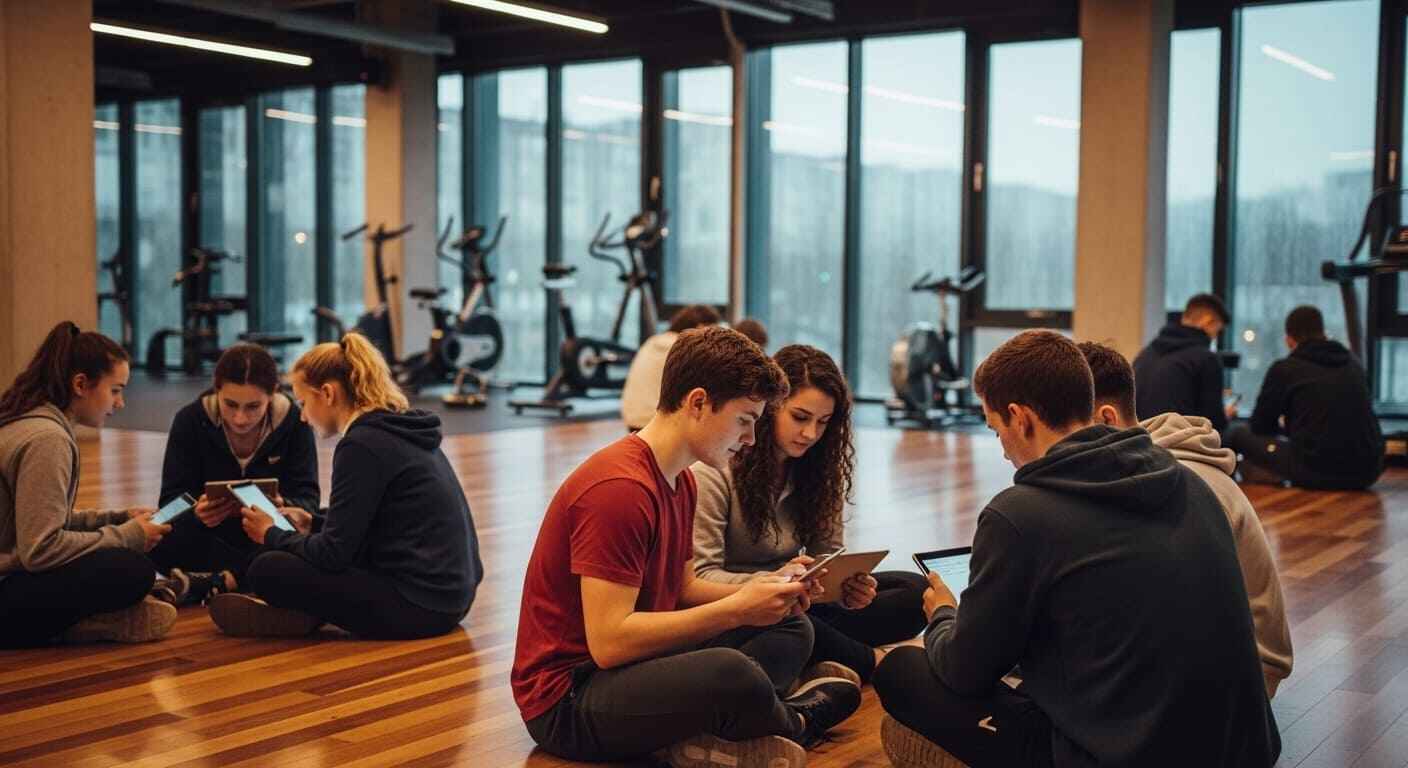 The 40-minute block is your indoor classroom standard. Here’s a plan to maximize engagement and learning. (This addresses: “What games can I use in PE for rainy days?”)
The 40-minute block is your indoor classroom standard. Here’s a plan to maximize engagement and learning. (This addresses: “What games can I use in PE for rainy days?”)
40-Minute Block Plan (Indoor Session)
| Time Slot | Activity Focus | Goal and Gimkit Integration |
| 0-5 min | Attendance, Intro, Space Setup | Get students settled in their Gimkit space (e.g., a PE classroom activity corner). |
| 5-15 min | Light Indoor Movement Warm-up | Active Answer Format Warm-up: Quick exercises assigned based on simple knowledge questions. |
| 15-30 min | Gimkit Knowledge Activity | Main event: Run a high-intensity, 15-minute game on the unit’s core knowledge. |
| 30-35 min | Discussion/Debrief | Review the hardest questions, connect the cognitive lesson to the physical practice. |
| 35-40 min | Closure, Transition | Pack up devices and transition out. |
Unit Integration Timeline
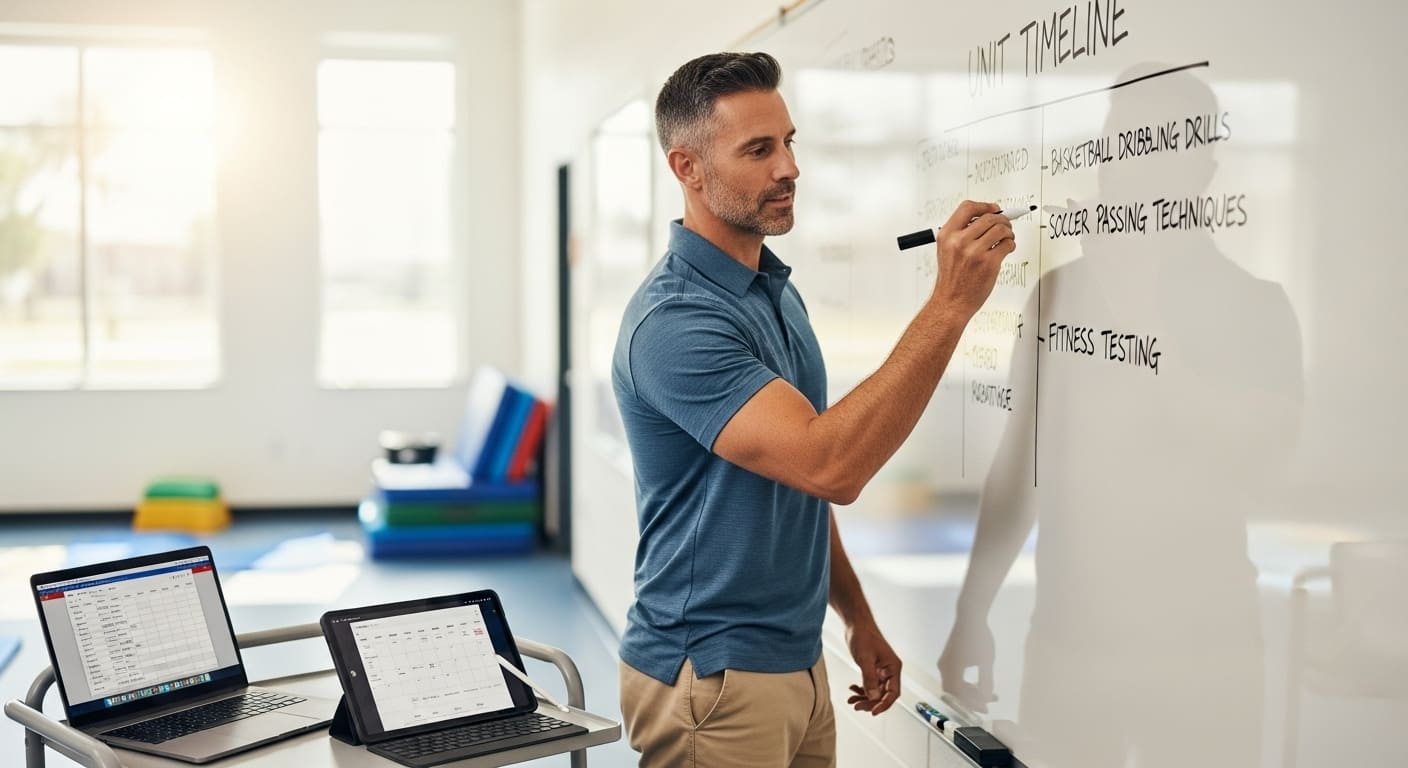 Don’t wait until the end of the unit to use Gimkit! Integrate it strategically.
Don’t wait until the end of the unit to use Gimkit! Integrate it strategically.
Basketball Unit Example (4-Week Integration)
- Week 1 (Pre-Game): A short “Rules Gimkit” before students ever touch a ball. Focus: Rules knowledge.
- Week 2 (Theory Day): A “Strategy Quiz” during a theory session. Focus: Cognitive Domain.
- Week 3 (Mid-Unit): A formative assessment on skills and vocabulary. Focus: Assessment and accountability.
- Week 4 (Post-Unit): A Comprehensive “Knowledge Tournament.” Focus: Summative assessment and review.
Hybrid PE Implementation
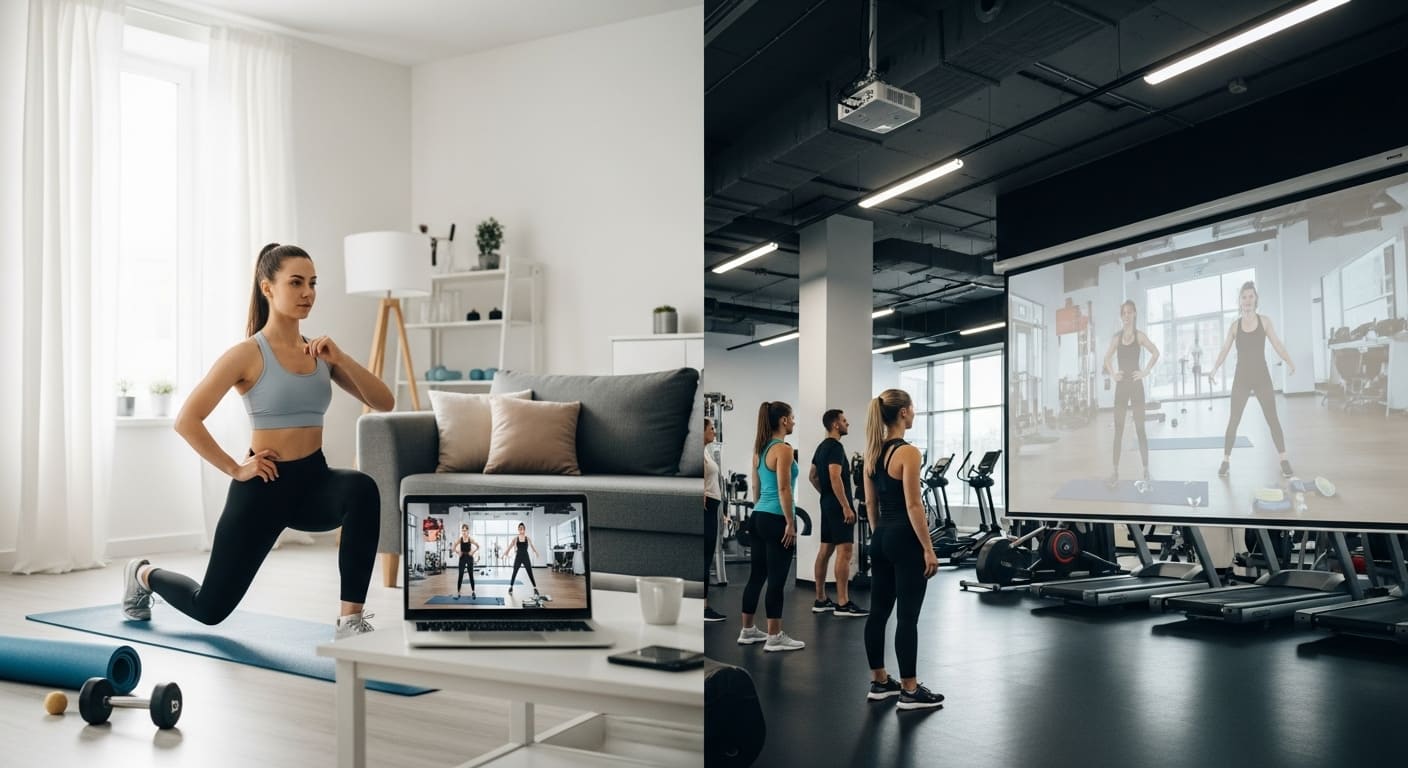 The blended approach ensures students are learning both at home and in the gym.
The blended approach ensures students are learning both at home and in the gym.
Synchronous and Asynchronous
- In-person: Physical activities and skill work.
- At-home: Assign a Gimkit Kit (Homework Mode) as asynchronous learning on health and wellness Gimkit activities.
- Virtual sessions: Schedule a live, synchronous Gimkit game for social connection and live competitive review.
Assessment and Standards Alignment
Gimkit generates data in a way that paper quizzes simply cannot match, making cognitive domain testing simple and immediate.
Using Gimkit for PE Assessment
Cognitive Domain Testing
- Pre-unit knowledge checks: Use Gimkit to quickly gauge what students already know. This helps you differentiate instruction.
- Formative assessment during unit: Use a quick 10-question Gimkit game at the start of class to review yesterday’s learning and guide today’s lesson. This is an essential part of Gimkit for formative assessment.
- Growth tracking over the year: Keep the data from your key kits (e.g., “Fitness Components”) and re-run them later in the year to show long-term knowledge retention.
SHAPE America Standards Mapping
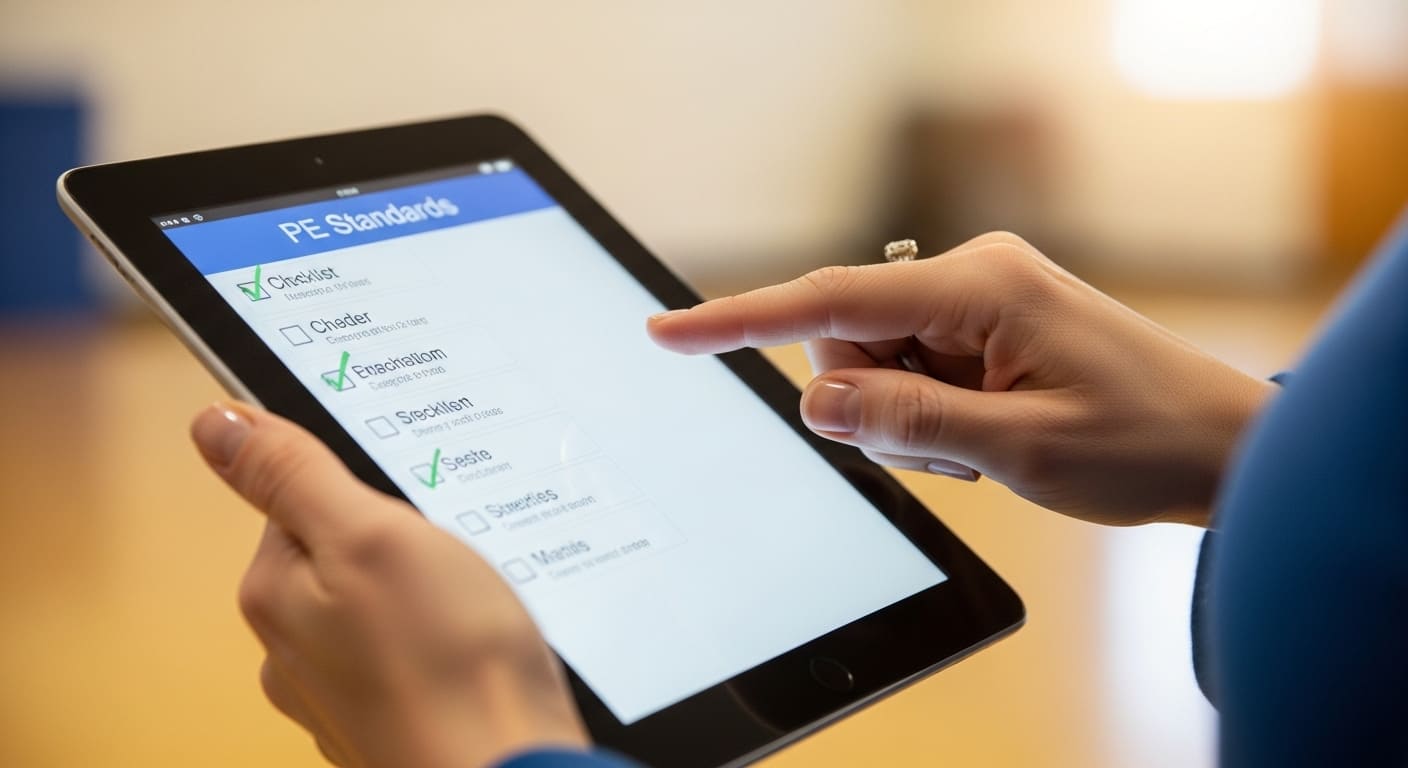 Gimkit can directly assess many of the core SHAPE standards:
Gimkit can directly assess many of the core SHAPE standards:
- Standard 2: Movement Concepts: Assess understanding of directional, temporal, and force concepts.
- Standard 3: Fitness Knowledge: Primary focus. Directly assess the FITT principle, heart rate zones, and muscle groups.
- Standard 4: Responsible behavior: Use scenario-based questions to assess understanding of sportsmanship and conflict resolution.
Health Education Standards
 Gimkit activities are perfect for the eight National Health Education Standards (NHES):
Gimkit activities are perfect for the eight National Health Education Standards (NHES):
- Core Concepts: Directly assessed in all nutrition, anatomy, and disease kits.
- Accessing Information: Quizzing students on reliable sources for health literacy information.
- Decision Making: Scenario-based questions on making safe choices regarding substance abuse prevention.
Creating Your Own PE Kits
The best PE classroom activities are the ones you create yourself, tailored to your students and your curriculum.
Kit Development Best Practices
Question Writing for PE
- Clear, concise language: Ensure your questions are direct and free of ambiguity, which is especially important when using Gimkit for assessment.
- Real-world relevance: Frame questions around real-life applications: “During a long soccer game, what nutrient should an athlete prioritize for sustained energy?” (Complex Carbs).
- Accurate information: Ensure all facts about anatomy basics, nutrition, and safety procedures are current and correct.
Multimedia Integration
 This is where you make the kits exciting for visual learners.
This is where you make the kits exciting for visual learners.
Visual and Video Questions
- Form analysis images: Upload an image of an incorrect push-up form and ask, “What fundamental technique error is being made in this photo?”
- Equipment identification photos: Show a picture of a lacrosse stick or a cricket bat and ask students to name the piece of equipment.
- Demonstration videos: Link to a 10-second video of a skill and ask a question about the technique used.
Collaborative Kit Building
Department-Wide Resources
Set up a PE-wide Gimkit folder. Sharing across grade levels (e.g., middle school shares its anatomy kit with high school teachers for review) ensures consistency and reduces individual workload.
Troubleshooting and Tips
Even the best technology has hiccups. Here’s how to manage the unique challenges of using Gimkit in a large, active setting.
Common PE-Specific Challenges
Technical Issues in Gymnasium
- WiFi connectivity problems: If you have spotty gym Wi-Fi, try to run smaller games (fewer players) or use Gimkit’s “Assign Homework” feature, which is less dependent on real-time speed. If you’re experiencing technical difficulties, refer to the official Gimkit Help/Troubleshooting Page for the latest solutions.
- Device charging logistics: Keep a portable charging station or a power strip near your “Gimkit Corner” to ensure devices are always ready for the next indoor activities day.
Engagement Strategies
Keeping PE Students Interested
- Competitive elements: Use the power of the Gimkit leaderboard. Project it prominently so students can see their fitness education quiz game progress in real-time.
- Connection to physical practice: Always debrief the game by linking the knowledge back to the physical skill. “You missed the question about the proper squat depth. Let’s stand up and practice that form right now!”
Conclusion
PE class is the laboratory where knowledge turns into lifelong habits. By integrating Gimkit for PE and health, you are ensuring that your students receive a complete, three-dimensional education. You are building not just stronger bodies, but stronger, more informed minds capable of making healthy choices.
PE is more than just movement; the cognitive knowledge you teach completes physical education. Gimkit is a powerful, engaging, and data-rich tool that should be in every PE teacher’s arsenal.
Don’t wait for the next rainy day PE to start. Try one simple “Rules Kit” this week and watch how quickly your students’ engagement—and knowledge—soars.
Frequently Asked Questions
PE Teacher Concerns
Isn’t Gimkit just for academic subjects?
Absolutely not. Gimkit is a question-and-answer platform, making it the perfect tool for the Cognitive domain in PE and Health. It’s ideal for topics that require memorization and quick recall, such as sports rules and strategy, anatomy basics, and health literacy terms. If it can be quizzed, it can be Gimkited.
How do I justify screen time in PE class?
You justify screen time by explaining that you are assessing and developing the cognitive part of physical education knowledge games. It is a mandatory part of the curriculum (referencing SHAPE America Standards). Emphasize that Gimkit provides data on fitness knowledge that is otherwise difficult to measure, and that the activity is always balanced with physical movement. It’s knowledge for movement.
What about students without devices?
This is a common concern in the gym. Here are solutions:
- Pairing: Have students work in pairs. One student is the “Player” (device holder), and one is the “Coach” (answering and strategizing). Switch roles every 5 minutes.
- Class-wide game: Use a projector and play a joint game where the whole class shouts out the answer, and one student inputs it.
- Use it as a station: Ensure the Gimkit station has a dedicated device (like a school Chromebook) while other stations are strictly physical.
How long should Gimkit activities be in PE?
For PE classroom activities, keep live games short and high-energy. The optimal duration is 8 to 15 minutes. This is long enough for the competitive money-earning mechanics to kick in, but short enough to keep the heart rate up and to fit seamlessly into a dynamic lesson plan.
Can Gimkit help meet PE standards?
Yes, directly and effectively. Gimkit is one of the easiest ways to document achievement of SHAPE America Standard 3 (Fitness knowledge) and Standard 2 (Movement Concepts) by providing instant, quantifiable data reports on student mastery. It’s excellent for standards-based reporting.
How do I grade Gimkit in PE?
You have a few options for Gimkit for PE and health grading:
- Participation (Easiest): Give credit simply for joining and completing the activity.
- Accuracy (Cognitive Grade): Set a minimum accuracy threshold (e.g., 70% of questions answered correctly).
- Effort (Engagement Grade): Grade based on the number of questions attempted or the total money earned (showing strategy and engagement).
What about students who aren’t good at sports?
Gimkit helps by providing unbiased Gimkit games where knowledge is the only factor for success. This ensures all students, regardless of physical ability, can excel and contribute to their team’s success.
Can I use Gimkit for health education?
Gimkit is an ideal tool for health education interactive activities because it can easily handle sensitive content like mental health awareness, nutrition education, and substance abuse prevention through objective, question-based formats. It makes covering essential health literacy topics fun and competitive.
What are the best game modes for PE?
The best game modes for gamification in physical education are:
- Classic: The standard, fast-paced, high-stakes option for quick knowledge checks.
- Trust No One: Excellent for sportsmanship and social-emotional learning, as it involves social strategy and deduction.
- The Floor is Lava: Use this to encourage movement. Students can only answer from certain spots on the floor, forcing them to move around the designated PE classroom activity area.






